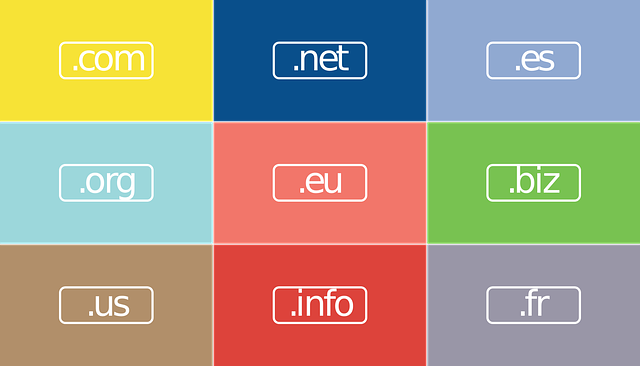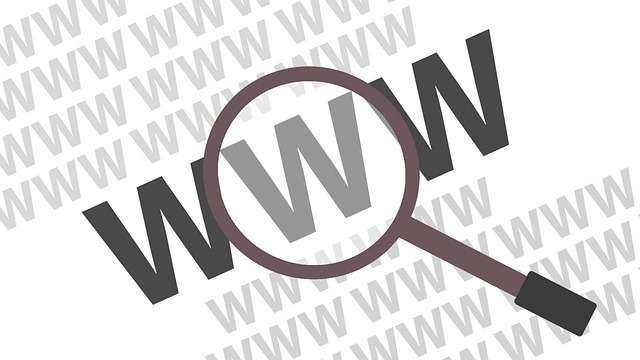The Secrets to Selling Domains for Maximum Profit
Table of Contents
Introduction
In the digital age, domain names have become valuable assets, akin to prime real estate in the virtual world. The practice of buying and selling domains, known as domain flipping, has evolved into a lucrative business for many entrepreneurs. However, the key to success in this competitive market lies not just in acquiring valuable domains but in selling them for maximum profit. This blog post will unveil the secrets to selling domains for top dollar, covering everything from market research and valuation to effective marketing and negotiation strategies.
Chapter 1: Understanding the Domain Market
The Value of a Domain Name
A domain name is more than just a web address; it’s a brand, a marketing tool, and a digital asset. The value of a domain name is influenced by several factors, including its length, keyword relevance, brandability, and extension. Understanding these factors is crucial for anyone looking to sell domains for maximum profit.
Market Trends and Demand
The domain market is dynamic, with trends and demand fluctuating based on technological advancements, industry shifts, and consumer behavior. Staying informed about these trends can help you identify high-demand domains and capitalize on emerging opportunities.
The Role of Domain Extensions
While .com remains the most popular and valuable domain extension, other extensions like .net, .org, and country-specific extensions (e.g., .co.uk, .ca) also hold significant value. The choice of extension can impact a domain’s appeal and marketability, so it’s essential to consider this when buying and selling domains.
Chapter 2: Research and Valuation
Conducting Market Research
Before selling a domain, it’s crucial to conduct thorough market research to understand its potential value. This involves analyzing comparable sales, assessing market demand, and identifying potential buyers.
Tools for Market Research
- Domain Marketplaces: Platforms like Sedo, Flippa, and Afternic provide insights into recent domain sales and current listings.
- Keyword Research Tools: Tools like Google Keyword Planner and SEMrush can help you identify high-traffic keywords that enhance a domain’s value.
- Traffic Analysis Tools: SimilarWeb and Alexa offer data on a domain’s traffic, which can be a significant selling point.
Domain Valuation
Accurately valuing a domain is essential for setting a realistic price and maximizing profit. Several factors influence a domain’s value:
- Length and Simplicity: Short, easy-to-remember domains are generally more valuable.
- Keyword Relevance: Domains containing popular, industry-specific keywords are more attractive to buyers.
- Brandability: Unique, catchy names that can be easily branded are highly sought after.
- Extension: As mentioned earlier, the domain extension plays a crucial role in its value.
- Traffic and Backlinks: Domains with existing traffic and high-quality backlinks are more valuable.
Valuation Tools
- EstiBot: Provides automated domain appraisals based on various factors.
- GoDaddy Appraisals: Offers estimated values for domains based on market data.
- Manual Appraisals: Consulting with domain experts or using professional appraisal services can provide more accurate valuations.
Chapter 3: Preparing Your Domain for Sale
Enhancing Domain Value
Before listing your domain for sale, take steps to enhance its value. This can make your domain more attractive to potential buyers and justify a higher price.
Developing a Basic Website
A domain with a basic website or landing page is more appealing to buyers. It demonstrates that the domain is active and can generate traffic. Consider adding relevant content, optimizing for SEO, and including calls-to-action (CTAs) to encourage visitor engagement.
Building an Email List
If your domain attracts traffic, consider building an email list. A domain with an established email list is more valuable, as it provides a ready-made audience for the buyer.
Social Media Presence
Create social media profiles associated with the domain. A strong social media presence can increase the domain’s visibility and appeal, making it more attractive to buyers.
Legal Considerations
Ensure that your domain doesn’t infringe on any trademarks or intellectual property rights. Conduct a thorough search using tools like the USPTO’s Trademark Electronic Search System (TESS) to avoid legal disputes that could derail a sale.
Chapter 4: Effective Marketing Strategies
Listing Your Domain
Choosing the right platform to list your domain is crucial for reaching potential buyers. Popular domain marketplaces include:
- Sedo: A global marketplace with a wide range of domains and a robust auction system.
- Flippa: Known for its user-friendly interface and extensive buyer network.
- Afternic: Integrated with major registrars, making it easier to reach a broad audience.
Crafting a Compelling Listing
Your domain listing should be clear, concise, and compelling. Highlight the domain’s key features, such as its length, keyword relevance, traffic, and any existing content or backlinks. Use high-quality images and provide detailed descriptions to attract potential buyers.
Leveraging Social Media
Social media platforms like Twitter, LinkedIn, and Facebook can be powerful tools for promoting your domain. Join domain-related groups, participate in discussions, and share your listings to reach a wider audience.
Email Marketing
Reach out to potential buyers directly via email. Craft personalized messages that highlight the domain’s value and how it aligns with the buyer’s business or interests. Use tools like Hunter.io to find email addresses of potential buyers.
Networking and Partnerships
Building relationships with other domain investors, brokers, and industry professionals can lead to valuable partnerships and opportunities. Attend industry conferences, join online communities, and collaborate with other investors to expand your network.
Chapter 5: Negotiation and Closing the Deal
Setting the Right Price
Pricing your domain correctly is crucial for attracting buyers and maximizing profit. Use the valuation tools and market research discussed earlier to set a realistic price. Consider starting with a slightly higher price to leave room for negotiation.
Negotiation Strategies
Effective negotiation can make the difference between a good deal and a great one. Here are some strategies to help you negotiate successfully:
- Do Your Homework: Research the buyer’s background and business to understand their needs and budget.
- Be Flexible: Be willing to negotiate on price, payment terms, or other conditions to reach a mutually beneficial agreement.
- Highlight Value: Emphasize the domain’s unique features and how it can benefit the buyer’s business.
- Stay Professional: Maintain a professional demeanor throughout the negotiation process to build trust and rapport.
Using Escrow Services
For high-value domains, using an escrow service is essential to ensure a secure transaction. Escrow services hold the buyer’s payment until the domain is successfully transferred, protecting both parties from fraud.
Transferring Ownership
Once the deal is finalized, follow the registrar’s process to transfer the domain to the buyer. Ensure that all necessary documentation is completed and that the buyer receives access to the domain.
Post-Sale Considerations
After the sale, follow up with the buyer to ensure they are satisfied with the transaction. Request feedback to improve your future sales and consider offering additional services, such as consulting or SEO optimization, to build a long-term relationship.
Chapter 6: Advanced Selling Strategies
Domain Parking
Domain parking involves placing ads on a domain’s landing page to generate income while you wait for a buyer. This can be a good way to monetize domains that are not immediately sold and increase their overall value.
Domain Leasing
Instead of selling a domain outright, consider leasing it to a buyer. This can provide a steady stream of income while retaining ownership of the domain. Leasing agreements should be clearly outlined, including terms, payment schedules, and renewal options.
Bundling Domains
If you own multiple domains in the same niche, consider bundling them together for sale. This can attract buyers looking for a comprehensive digital asset package and increase the overall value of the sale.
Offering Financing Options
For high-value domains, offering financing options can make it easier for buyers to afford the purchase. This can include installment payments, deferred payment plans, or partnerships with financing companies.
Chapter 7: Common Mistakes to Avoid
Overpricing Your Domain
Setting an unrealistic price can deter potential buyers and prolong the selling process. Use market research and valuation tools to set a fair and competitive price.
Ignoring Legal Issues
Failing to address trademark or intellectual property issues can lead to legal disputes and jeopardize the sale. Conduct thorough due diligence to ensure your domain is free from legal complications.
Neglecting Marketing
Even the most valuable domain won’t sell if no one knows about it. Invest time and resources in marketing and promoting your domain to reach potential buyers.
Lack of Patience
Domain flipping is not a get-rich-quick scheme. It requires patience, persistence, and a long-term perspective. Don’t expect to make a profit overnight; be prepared to wait for the right buyer.
Poor Communication
Effective communication is key to successful negotiations and closing deals. Respond promptly to inquiries, provide clear and detailed information, and maintain a professional demeanor throughout the process.
Chapter 8: Success Stories in Domain Selling
Case Study 1: Voice.com
In 2019, the domain Voice.com was sold for a staggering $30 million. The domain was purchased by Block.one, a blockchain software company, to launch a new social media platform. This sale highlights the potential value of premium, brandable domains.
Case Study 2: Insurance.com
Insurance.com was sold for $35.6 million in 2010, making it one of the most expensive domain sales in history. The domain was purchased by QuinStreet, a leading online marketing company, to strengthen its presence in the insurance industry.
Case Study 3: VacationRentals.com
In 2007, VacationRentals.com was sold for $35 million to HomeAway, a vacation rental marketplace. The domain was a perfect fit for HomeAway’s business model, demonstrating the importance of choosing domains that align with a company’s brand and industry.
Chapter 9: The Future of Domain Selling
Emerging Trends
- New Domain Extensions: With the introduction of new domain extensions like .ai, .io, and .app, there are more opportunities for domain investors to find valuable names.
- Blockchain Domains: Blockchain-based domains like .crypto and .zil are gaining popularity, offering new opportunities for investors.
- AI and Automation: AI-powered tools are making it easier to identify valuable domains, automate bidding, and optimize SEO.
The Role of Technology
Advancements in technology are transforming the domain selling industry. From AI-driven domain appraisals to blockchain-based domain ownership, technology is making it easier and more efficient to buy, sell, and manage domains.
The Importance of Branding
As the internet becomes more crowded, branding will play an increasingly important role in domain selling. Domains that are unique, memorable, and align with a company’s brand will continue to be in high demand.
The Global Market
The internet is a global marketplace, and domain selling is no exception. As more businesses go online, the demand for premium domains will continue to grow, offering opportunities for investors worldwide.
Conclusion
Selling domains for maximum profit requires a combination of market knowledge, strategic planning, and effective execution. By understanding the factors that influence domain value, conducting thorough research, and employing proven marketing and negotiation strategies, you can unlock the full potential of your domain portfolio. Remember, success in domain selling is not just about making a sale; it’s about building a sustainable and profitable business. Stay informed, stay focused, and most importantly, stay ahead of the curve. Happy selling!


